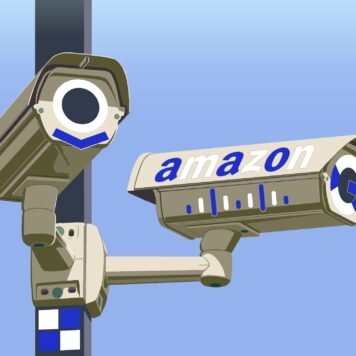“I just found out we have been exposed to someone with COVID-19,” Mrs. López told me over the phone while we were planning another week of air monitoring at her home. These words are alarming for anybody to hear – not only because of the chance of having contracted COVID-19, but because of the anxiety-producing incubation time of up to two weeks that would keep Mrs. López and her family in quarantine, facing an uncertain future without work and without knowing how severe their symptoms would be. COVID-19 has proven to be a deadly, difficult virus to endure, with a primary symptom of shallow and laboured breathing. The López family, like others living next to oil and gas facilities across North America and globally, have already been experiencing ongoing respiratory problems in addition to rashes and frequent, gushing nosebleeds. Mrs. López and her family ended up surviving COVID-19. Now recovered, she repeated to me, “I wouldn’t wish this on anybody… It’s a double dose.”
When the pandemic hit the US, I was monitoring air pollutants with primarily Latinx families in Texas who belong to the 17.6 million Americans living within a mile of an oil or natural gas well. In my work, we challenge environmental racism, a system of oppression that stretches across the US and globally to disproportionately threaten Black, Indigenous, People of Colour (BIPOC), like myself, with higher rates of pollution. A critical scholar named Laura Pulido has shown us how polluters promote white supremacy when they disregard legislation that protects BIPOC health, burden our communities with health harms to cut costs, and then do not listen to our voices. On top of this, COVID-19 has intensified these already-present injustices.
I joined this Texas air-monitoring project with the Wylie Lab at Northeastern University in the summer of 2015 when I left my job as a high school earth science teacher to pursue a PhD in environmental sociology. We started by measuring hydrogen sulfide (H2S), a rotten-egg smelling gas found naturally in oil and gas deposits that can make it hard to breathe. H2S also affects the neurological system, causing dizziness and, at high concentrations, unconsciousness or death. Our community-based air monitoring led us to recognise black carbon as another threat to the López family’s respiratory health. Black carbon is a type of particulate matter, or solid suspended in the air, that can come from malfunctioning flares burning off excess gas. You can tell that these flares are not working properly when black smoke trails out from the flames. The US Environmental Protection Agency (EPA) allows these smoking flares to burn for five minutes at a time every two hours; however, near where the López family lives, I have seen them for twenty minutes at a time. In the López’ backyard, the local and global connect – these pollutants immediately threaten their bodies, simultaneously contributing to the larger climate crisis.
Scientists are still exploring how pollutants accumulate and react with each other in the atmosphere to impact human health, and like with COVID-19, we still are not certain of the lifelong impacts of these exposures. At the beginning of the pandemic, Sharon Wilson, a senior organiser with the non-profit organisation Earthworks’ Oil and Gas Accountability Project, pointed out to me that families across Texas were bracing themselves to experience this duality of harm: environmental health problems caused by air pollution and COVID-19.
In order to limit exposures to health-harming pollutants, we need to monitor the air. At sites where oil and gas is drilled or processed, workers risk their lives everyday but have protections under the US Occupational Safety and Health Administration (OSHA), which requires them to have safety training, wear protective gear, and regularly test their air with expensive, high-end tools. Fenceline communities, the people who live right next to these facilities and may even share a fence with them, usually do not have expensive monitors or other protections. Instead, they rely on their senses, like smell, to recognise when there may be a release of chemicals. Since a loss of smell is a symptom of COVID-19, it was scary for the Lópezes to lose this means of sensing danger.
As environmental risks disproportionately impact institutionally underserved communities, many people living next to these facilities do not have the income to leave. Mrs López tells me, “I just want to carry everything out of here. If I could take the whole property and scrape it off the land, I would”. This sentiment, held by Mrs López and others in her situation, have been largely ignored by state agencies and politicians. Mrs López says: “What I would like is for the President, Congresspeople and Mayors who don’t have to worry… I wish they would just come and speak to us”. By ignoring the voices and needs of Latinx and other BIPOC communities affected by pollution, the government upholds white supremacy.
During the final 2020 US Presidential debate, President Donald Trump and his contender, now President-elect Joe Biden, were asked how they will address issues of climate and environmental injustice. While environmental justice activists celebrated this issue making it to the main stage, President Trump side-stepped the question and responded that “the families that we’re talking about are employed heavily and they are making a lot of money, more money than they’ve ever made”, implying that money is more valuable than health. Mrs López and others’ experiences tell us that this is not true. Not only are they struggling financially because of COVID-19, but for them, money is not more important than their wellbeing.
President Trump’s refusal to recognise BIPOC fenceline voices while taking away the few protections they have further embeds white supremacy into US politics. At the beginning of the pandemic, American Petroleum Institute President Michael J. Summers wrote President Trump a letter requesting routine testing and reporting to the EPA, a necessity to protect workers and communities. Six days later, President Trump signed an executive order to pause much industry monitoring and reporting to the EPA from March to August, 2020. This was a brazen move, but not unsurprising, because higher-ups in the oil and gas industry have continuously influenced politics. For example, in 2005, President G.W. Bush, whose Vice President Dick Cheney was the former CEO of an oilfield service company called Halliburton, introduced legislation called the ‘Halliburton Loophole’, exempting a drilling process called hydraulic fracturing, or “fracking”, from many EPA requirements. More recently, President Trump appointed Rex Tillerson, a former CEO of ExxonMobil, as US Secretary of State (he resigned in 2018) and Scott Pruitt, an energy industry lobbyist, as EPA administrator in 2017. Pruitt was replaced by Andrew Wheeler, another energy lobbyist, in 2018.
In response to these long standing issues, I have been working with the Environmental Data and Governance Initiative (EDGI), a network of technologists, academics, and activists that fight for accessible, rigorous, and transparent government environmental data. We formed immediately after President Trump was elected, in anticipation that his administration would threaten environmental data and the EPA. When we tracked changes on federal websites, we saw that mentions of ‘climate change’ were taken down and noticed the Office of Environmental Justice had been moved from the Office of Enforcement and Compliance Assurance to the Office of Policy – bringing it closer under the EPA administrator’s political control. President Trump’s executive order to limit EPA enforcement was (hopefully) the apex of his dismantling of the EPA.
In EDGI’s recent report about EPA enforcement during COVID-19, we analysed Clean Air Act data from each March and April (to control for factors such as weather) since 2001, and we found a steady decline of violations not only during the pandemic but since 2002. A violation happens when facilities do not comply with EPA laws, for example, when emissions are above legal limits. Most of this data is self-reported by industry, making the under-reporting of emissions a systemic issue. Violations are primarily found through inspections; one type of inspection is when EPA personnel monitor a ‘stack test’, when facilities measure the air emissions coming from a facility. Stack tests have been lower than they have been since 2004, and inspections are the lowest since 2001. When facilities have violations, they often only receive a low fine or no fine. Our findings prompted the question – are there really fewer violations, or are facilities reporting less and is the EPA investigating fewer sites?
Right now, it is the public’s burden to document and report these injustices if they seek restitution for the double dose. Organisations like Earthworks, Fractracker Alliance, and the Southwest Pennsylvania Environmental Health Project (EHP) are working to help communities bear this burden and organise around environmental health. For instance, Fractracker Alliance’s reporting app crowdsources pictures and observations from fenceline communities and makes oil and gas data more accessible to the public. EHP has constructed and maintains a database of reported health symptoms and experiences from these communities, connecting this data with health professionals who study links between oil and gas and health.
What next? It should not be the responsibility of communities harmed by pollution to hold industry accountable. When we look at the damage from COVID-19, we see how polluting industries have been favoured by US politicians and disproportionately impact BIPOC lives to keep structures of white supremacy intact. This problem can only be addressed by large changes like a transition from fossil fuels to renewable energy and continued dismantling of racism. This isn’t just about the environment. This is about health and equity. After my last phone call with Mrs. López, she sent me a message with final words: “The only one who protects us from this virus and this facility is our Lord Jesus Christ.”

See more of Sargam’s work HERE













